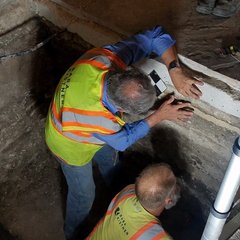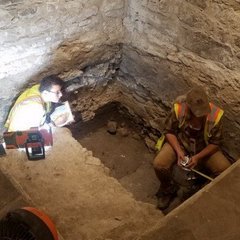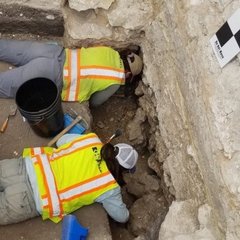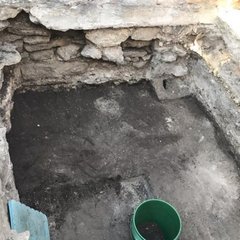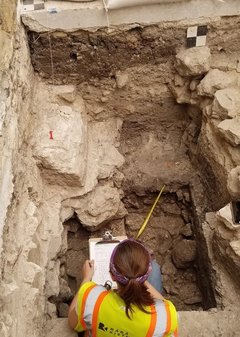There were no archaeological investigations conducted as part of the Safety Bollard Installation Project during the week of the 16th. Since shovel testing conducted by the University of Texas at San Antonio’s (UTSA) Center for Archaeological Research (CAR) was completed in the areas that are open, and no additional excavations were planned, there was no need for the archaeologists from CAR to be on site.
The archaeological investigations conducted by Raba Kistner concentrated on documentation of excavation unit walls. The archaeologists on the interior focused on the final documentation of the structure foundation and the layers of soil noted in the unit walls. The archaeologists draw scaled profiles of each wall of the excavation unit that includes information about the location of soil changes, soil types, soil color, the presence of features, and artifacts that remain in the unit walls.

